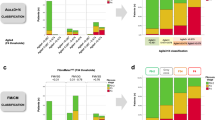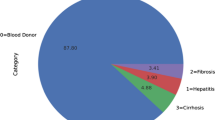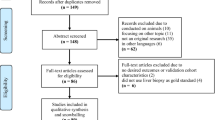Abstract
Globally one in twelve people have the Hepatitis B or Hepatitis C virus. Diagnosis and treatment of this disease is guided by liver biopsies where a small amount of tissue is removed by a surgeon and examined by a pathologist to determine the fibrosis stage from F0 (no damage) to F4 (cirrhosis). Biopsies are costly and carry some risk for the patient. Non-invasive techniques for determining fibrosis stage have been developed and evaluated since 2003. Non-invasive methods have utilized serum markers, imaging test, and genetic studies. The accuracy of these non-invasive techniques has not achieved sufficient acceptance and so the invasive biopsy is still considered the gold standard.
Clinical decision support systems (CDSS) use decision support system theory and technology to assist clinicians in the evaluation and treatment process. Using historical clinical data and the relationship processed by Artificial Intelligence (AI) techniques to aid physicians in their decision making process is the goal of CDSS. The CDSS provides a large number of medical support functions to help clinicians make the most reasonable diagnosis and choose the best treatment measures.
This paper applies four artificial intelligence predictive techniques to publicly available data on 424 Hepatitis B and Hepatitis C patients. Demographic and standard serum markers are utilized to predict fibrosis stage and compare these predictions to known biopsy results. A final decision tree evaluation is applied to make a final prediction. We have also developed a publically available web application that can be used as a prototype for presenting AI predictive results in a CDSS environment based on these models. This technique along with others could mitigate the need for some liver biopsies in the more than 500 million Hepatitis B and C patients worldwide with additional validation and verification.







Similar content being viewed by others
References
Albedawi, M., Ruiz-Rodriguez, E., and Carey, W. D., Hepatitis C virus: Prevention, screening, and interpretation of assays, Cleveland Clinic Journal of Medicine 2010; 77 (9):616–626;doi:10.3949/ccjm.77a.09162
http://www.hepfi.org/living/liv_abc.html retrieved from the internet on 3/15/2010
Keltch, B., Lin, Y., and Bayrak, C. “Advanced Decision Support for Complex Clinical Decisions”, JBiSE, 2010
Carey, E., and Carey W., Noninvasive tests for liver disease, fibrosis, and cirrhosis: Is liver biopsy obsolete? Cleveland Clinic Journal of Medicine 2010; 77 (8):519–527;doi:10.3949/ccjm.77a.09138
Begg, R., “Artificial Intelligence Techniques in Medicine and Health Care”, in Concepts, Methodologies, Tools, and Applications by Vijayan Sugumaran (ed) ISBN: 9781599049410, 2009.
Wyatt, J., Computer-based knowledge systems. The Lancet 338:1431–1436, 1991.
Tan, P. N., Steinbach, M., and Kumar, V., Introduction to Data Mining”. Pearson Addison Wesley, Boston, MA ISBN(0321321367), 2006.
Krawczyk, B., Woźniak, M., Orczyk, T., and Porwik, P., Cost Sensitive Hierarchical Classifiers for Non-invasive Recognition of Liver Fibrosis Stage, Proceedings of the 8th International Conference on Computer Recognition Systems CORES 2013. Advances in Intelligent Systems and Computing Volume 226:639–647, 2013.
Krawczyk, B., Woźniak, M., Orczyk, T., and Porwik, P., Adaptive Splitting and Selection Method for Noninvasive Recognition of Liver Fibrosis Stage, Intelligent Information and Database Systems. Lecture Notes in Computer Science 7803:215–224, 2013.
Brighton, B., Introduction to Artificial Intelligence”, 1969.
Burns, R. P., and Burns, R., Business Research Methods and Statistics Using SPSS”, 2008.
Gabr, S. A., and Alghadir, A. H., Prediction of fibrosis in hepatitis C patients: assessment using hydroxyproline and oxidative stress biomarkers. Indian Journal of Virology 25(1):91–100, 2014.
Tamaki, N., Kurosaki, M., Matsuda, S., Muraoka, M., Yasui, Y., Suzuki, S., Hosokawa, T., Ueda, K., Tsuchiya, K., Nakanishi, H., Itakura, J., Takahashi, Y., Asahina, Y., and Izumi, N., Non-invasive prediction of hepatocellular carcinoma development using serum fibrosis marker in chronic hepatitis C patients. Journal of Gastroenterology, December, 2013.
http://digestive.niddk.nih.gov/ddiseases/pubs/nash/images/liver_damage.gif
http://www.sinomedresearch.org/hcv/Biopsy/stage.htm retrieved from the internet on 3/15/2010
Batts, K. P., and Ludwig, J., Chronic hepatitis. An update on terminology and reporting, Am J Surg Pathol. 19(12):1409–17, 1995.
http://lisp.vse.cz/challenge/ecmlpkdd2005/ECML/PKDD 2005 Discovery Challenge
http://www.cs.waikato.ac.nz/ml/weka/. Weka Data mining Software
http://en.wikipedia.org/wiki/Cross-validation_%28statistics%29
Author information
Authors and Affiliations
Corresponding author
Additional information
This article is part of the Topical Collection on Patient Facing Systems
Rights and permissions
About this article
Cite this article
Keltch, B., Lin, Y. & Bayrak, C. Comparison of AI Techniques for Prediction of Liver Fibrosis in Hepatitis Patients. J Med Syst 38, 60 (2014). https://doi.org/10.1007/s10916-014-0060-y
Received:
Accepted:
Published:
DOI: https://doi.org/10.1007/s10916-014-0060-y




